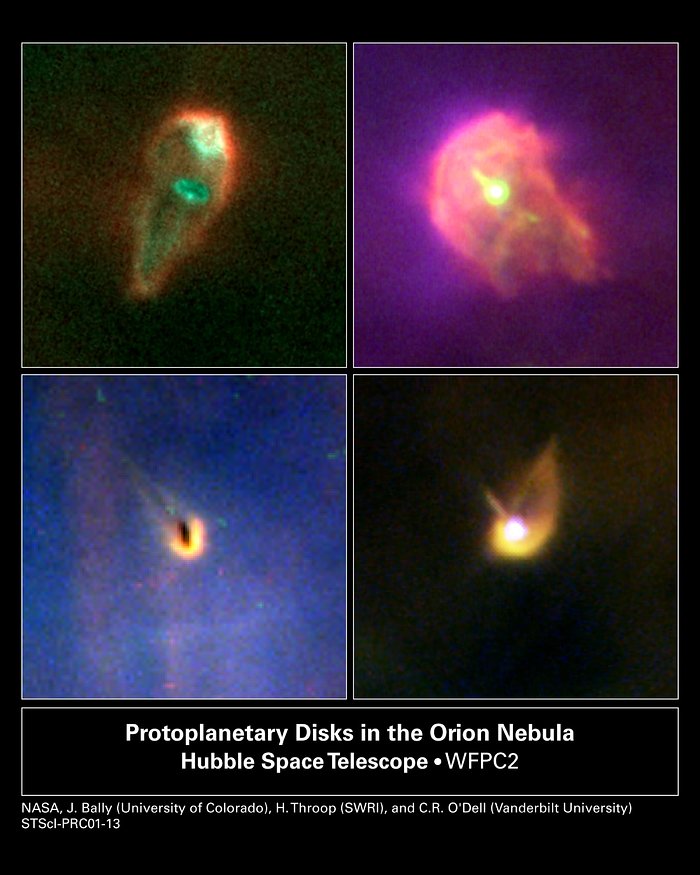Protoplanetary Disks in the Orion Nebula
Planet formation is a hazardous process. This image, taken by the NASA/ESA Hubble Space Telescope, shows a dust disk around an embryonic star in the Orion Nebula being 'blowtorched' by a blistering flood of ultraviolet radiation from the region's brightest star. Within such a disk are the seeds of planets. The doomed system looks like a hapless comet, with a wayward tail of gas boiling off the withering, pancake-shaped disk.
Planet formation is a hazardous process. These four snapshots, taken by the NASA/ESA Hubble Space Telescope, show dust disks around embryonic stars in the Orion Nebula being 'blowtorched' by a blistering flood of ultraviolet radiation from the region's brightest star. Within these disks are the seeds of planets. The doomed systems look like hapless comets, with wayward tails of gas boiling off the withering, pancake-shaped disks.
Links:
Credit:About the Image
About the Object
| Name: | M 42, Messier 42, NGC 1976, Orion Proplyd |
| Type: | Milky Way : Nebula : Appearance : Dark : Proplyd |
| Distance: | 1400 light years |
| Category: | Miscellaneous Stars |
Colours & filters
| Band | Telescope |
|---|---|
| Optical |
Hubble Space Telescope
WFPC2 |
